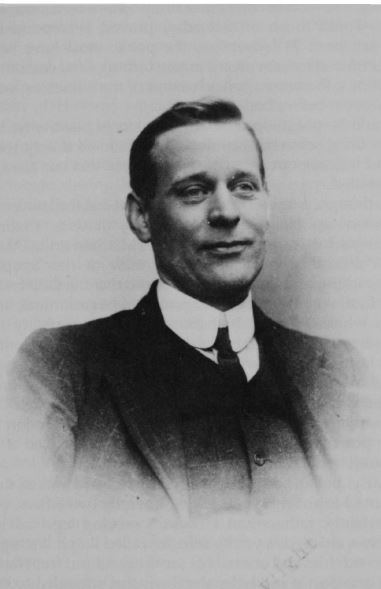Name Murder George | ||
 | ||
2BAAP Gorse Hall Murder Centenary Re-enactment
The murder of George Harry Storrs occurred on 1 November 1909 in Stalybridge, Cheshire, England. Despite two trials, nobody was convicted of the crime.
Contents
History
George was the third son of William Storrs, a very successful builder in Stalybridge, Cheshire. George inherited control of William's business. George lived at Gorse Hall in Stalybridge, with his wife, Maggie (née Middleton). They had married late, he at 30 and she at 35. The marriage was both loveless and childless, unlike that of George's older brother James, and it is possible that this was a cause of friction between the two brothers. Another brother William Henry had died in 1903. Cornelius Howard, a cousin of George Harry Storrs, was originally a petty thief but joined the Army and rose to the rank of Bombardier. Cornelius was not liked by George. When Cornelius approached George for a position in the company, George refused.
George's friend, local solicitor Robert Innes, employed a governess for his children and George began a relationship with the young woman, Maria Hohl. Maria suddenly decided to leave Stalybridge, purportedly to attend Oxford University. She then returned, equally as suddenly, some eight months later but did not see George again. Goodman wrote that Maria gave birth to a child during her absence from Stalybridge. After her return to Stalybridge, Maria Hohl committed suicide by drowning herself in a canal. Robert Innes was a distant relation to George Harry Storrs through marriage. Robert Innes' first wife was Eliza Storrs and they had a daughter Eliza Storrs Innes. Eliza's father, John Storrs was involved in the management of Taylor, Lang & Co the major textile engineering company in the town. He and his cousin William, George Harry's father, lived next door to each other in Mottram Road, Stalybridge.
After Maria's death, George started receiving anonymous threatening letters. Due to her death he felt he had a debt to pay and felt that he would be killed. This meant he could only really confide in his faithful servant, James Worrell.
Shortly afterwards, Gorse Hall was attacked twice. The first attack, Goodman held, was staged (Goodman called it a burlesque), so that the police would take the threats seriously. A gun barrel was thrust through a window. This was probably done by Worrell. The attack made the police start patrols of the ground and a bell was installed to summon help in times of danger. George tested the bell, causing a lot of goodwill for George to evaporate.
The second attack on the evening of 1 November 1909, was the fatal one. After "testing" the bell, George was not told by the police that they were protecting election buildings - this meant that help only arrived as he was dying. Maggie Storrs rang the bell for the second attack, and refused to attend her husband's side as he lay dying, possibly to avoid hearing a confession of infidelity from her dying husband and thereby protecting her own reputation. Despite witnesses reporting seeing an intruder with a gun, Storrs was stabbed to death, with 15 stabs being noted on his body.
There were two trials: the first for George Harry's cousin, Cornelius Howard, who was acquitted and the second for another local man, Mark Wilde. Wilde was brought to the attention of investigators after he had attacked a young courting couple. Both Howard and Wilde were defended by barrister Edward Theophilus Nelson, a British Guianan who had graduated from St John's College, Oxford, in 1902.
James Worrall committed suicide, by hanging himself, shortly after the burial of his employer.
Suspects
The two trials both resulted in acquittals and nobody was definitely proven to be the murderer. However, there are quite a few suspects. The case is examined in The Stabbing of George Harry Storrs by Jonathan Goodman, and featured in an episode of the television series In Suspicious Circumstances in 1995 and Julian Fellowes Investigates: A Most Mysterious Murder in 2005.
A year after the murder, Mrs Storrs had Gorse Hall torn down.
Modern day
In November 2009, the Friends of Gorse Hall, in conjunction with the Two Boards and a Passion Theatre Company, staged a walk through the town which culminated at the site of Gorse Hall. On the way, they stopped at the pub where James Worrell was drinking, and the theatre company performed scenes whilst in period dress.
In April 2010, a local historian stated that he thought the murderer was someone else, as the description given by the cook of the house did not fit either of the men who were sent for trial. The new suspect was convicted of killing his lover, Hannah Etchells, and dumping her body in a canal. This murder occurred just a few months after the Storrs murder, and it is believed that the new suspect confessed to Etchells and then murdered her when he thought she was going to go to the police. The description of the new suspect fits that given by the cook on the night of the Storrs murder.
